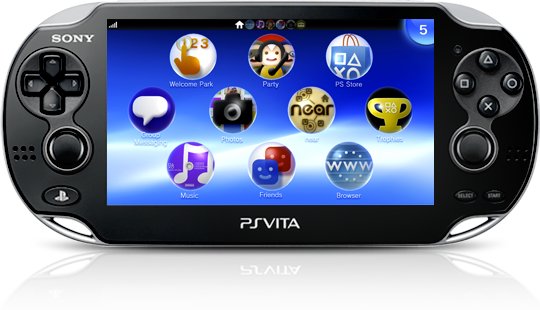The PlayStation Vita is one of those machines that I have to admit I have never played. Not because it is a bad gaming console or anything like that, but because I have always found things like the 3DS or the iPod Touch to be more in line with what I want to do in the mobile gaming space. It looks like I am not alone in this thought either.
I recently read an article over at PlayStation Universe in which Mark Cale, the CEO of game publisher System 3, said that the Vita was a “missed opportunity.” The article got me thinking; ‘Why don’t more people play the Vita than one of the other portable gaming machines?’
I think the reason for this is a question of structural timing and not knowing what the consumer wants.
 When Apple unveiled the iPad in 2010, the tablet PC market was, in a word, lacking. Most people who were on the go usually had some sort of laptop to do their work and handle business things, and then they had their iPhone so they could make calls, but “more importantly” spend hours in the app store downloading the latest games like Angry Birds.
When Apple unveiled the iPad in 2010, the tablet PC market was, in a word, lacking. Most people who were on the go usually had some sort of laptop to do their work and handle business things, and then they had their iPhone so they could make calls, but “more importantly” spend hours in the app store downloading the latest games like Angry Birds.
When the iPad was released, it was immediately popular even though it was receiving mixed critic reviews. Why? Because the iPad could handle the business side of things like a laptop, but could also satisfy that lust for apps since it was also connected to the Apple App Store. Apple was able to provide a need since it already had the structure in place.
 Sony tried to do the same thing with the PS Vita, making it the go-to device for mobile gaming. The problem though is that consumers didn’t see the structure. The PS Vita wouldn’t connect to PlayStation 3 games unless the developers said it could. The PS Vita wouldn’t allow multiplayer gaming over a 3G network. The PS Vita didn’t have any onboard storage.
Sony tried to do the same thing with the PS Vita, making it the go-to device for mobile gaming. The problem though is that consumers didn’t see the structure. The PS Vita wouldn’t connect to PlayStation 3 games unless the developers said it could. The PS Vita wouldn’t allow multiplayer gaming over a 3G network. The PS Vita didn’t have any onboard storage.
But the most immediate problem; The PS Vita didn’t have a store as popular or as intuitive as the Apple App Store.
The structure just wasn’t there, and if it was, Sony did a poor job of marketing it. If I had one thing to say to Sony, I’d say go back and find out how your competitors are crushing you in the mobile market. Then, once you get all that information, make it better. Be innovative. Learn from the mistakes of the past. Most of all; Speak to us, the consumer. Not to try to sell us a product, but to engage in a conversation so you can hear what we want. ‘Cause once you find out what we want, you can then deliver a product worthy of our time, with a structure built to dominate.






Published: Oct 17, 2013 10:32 pm